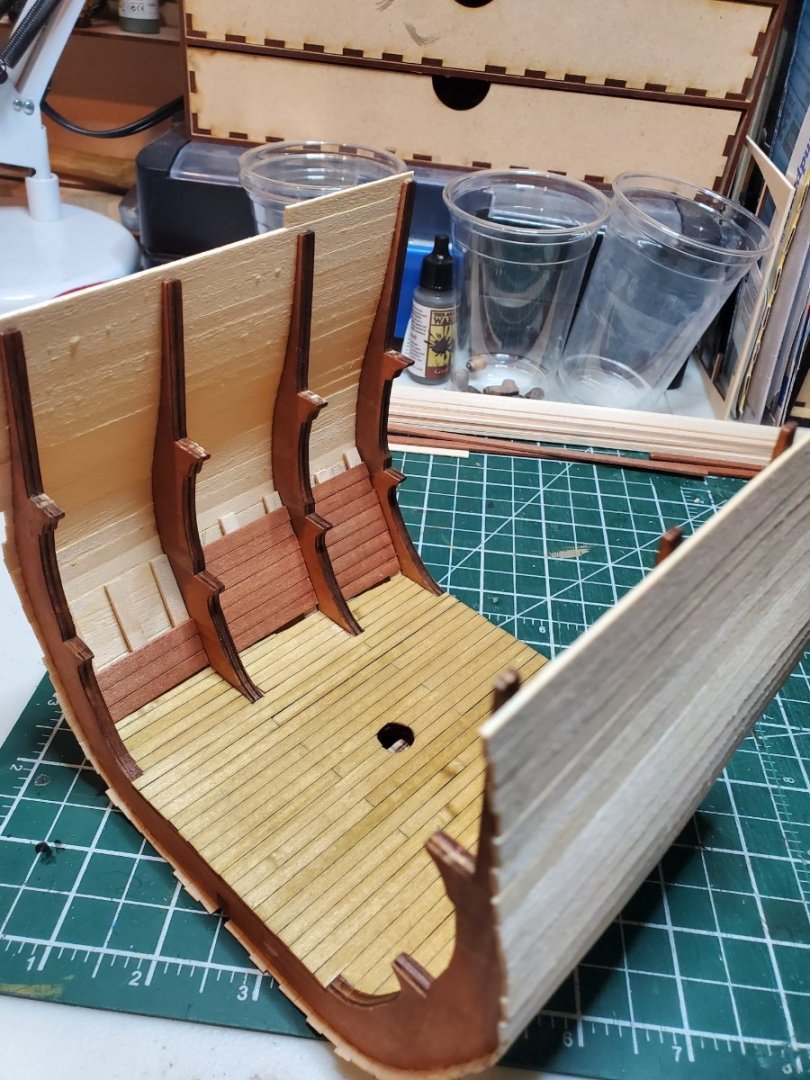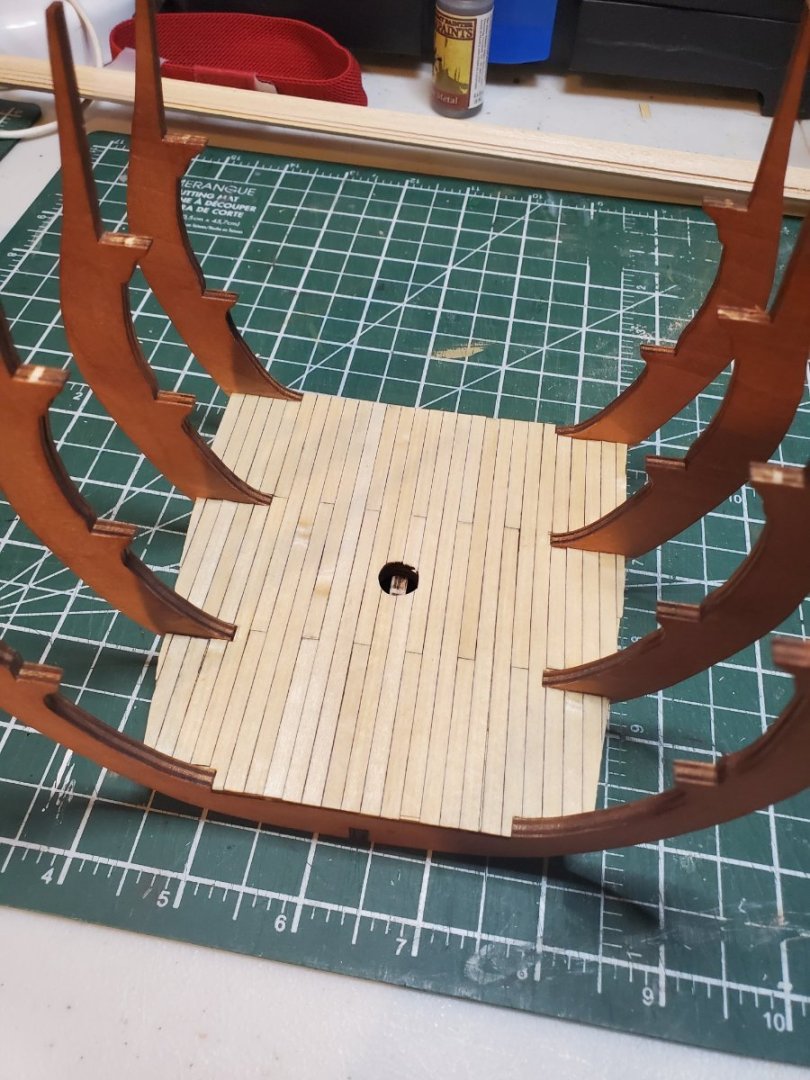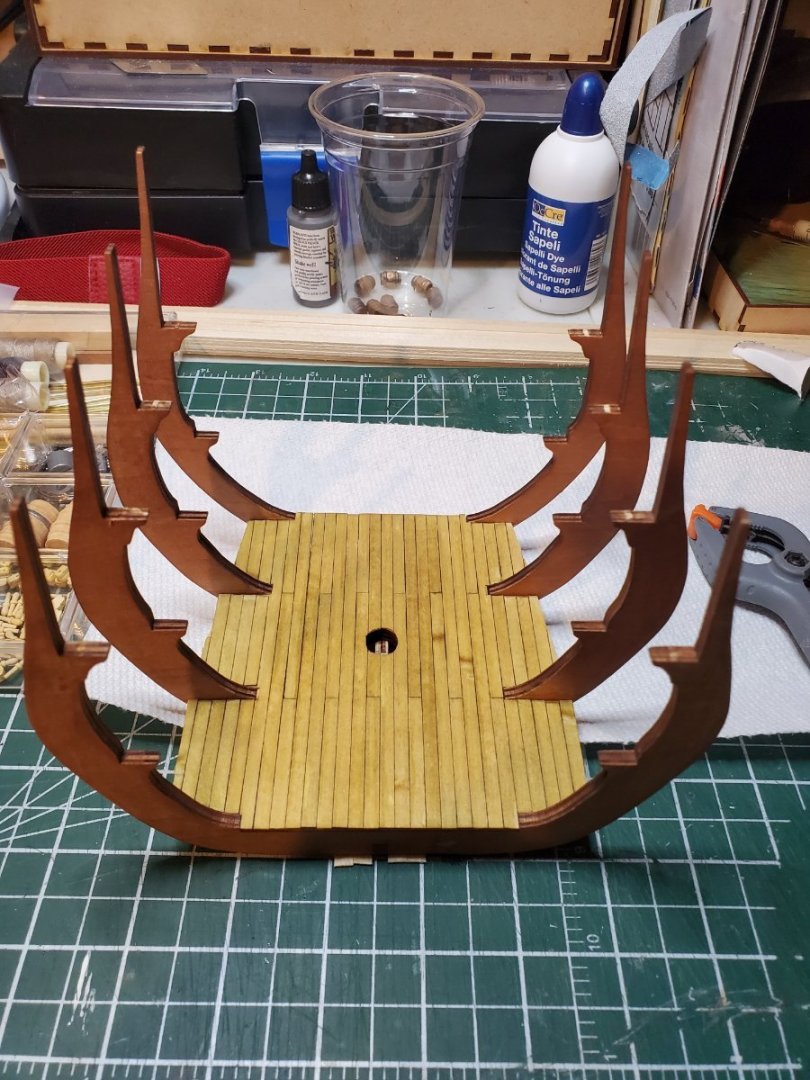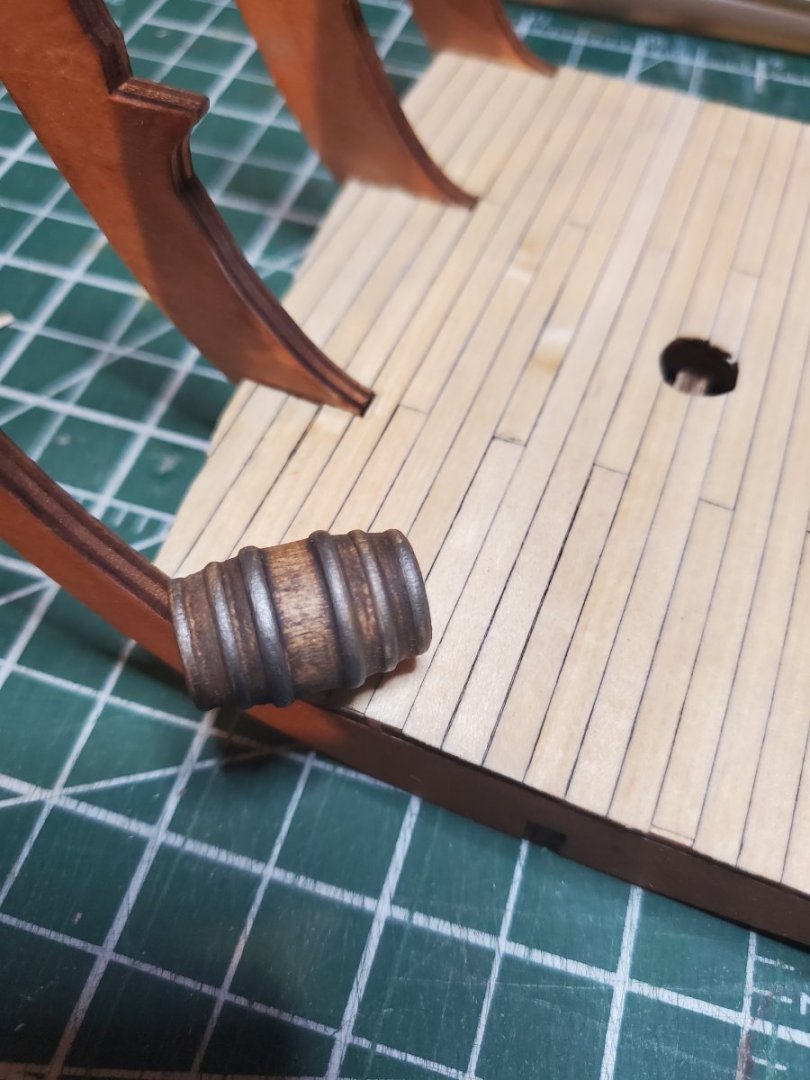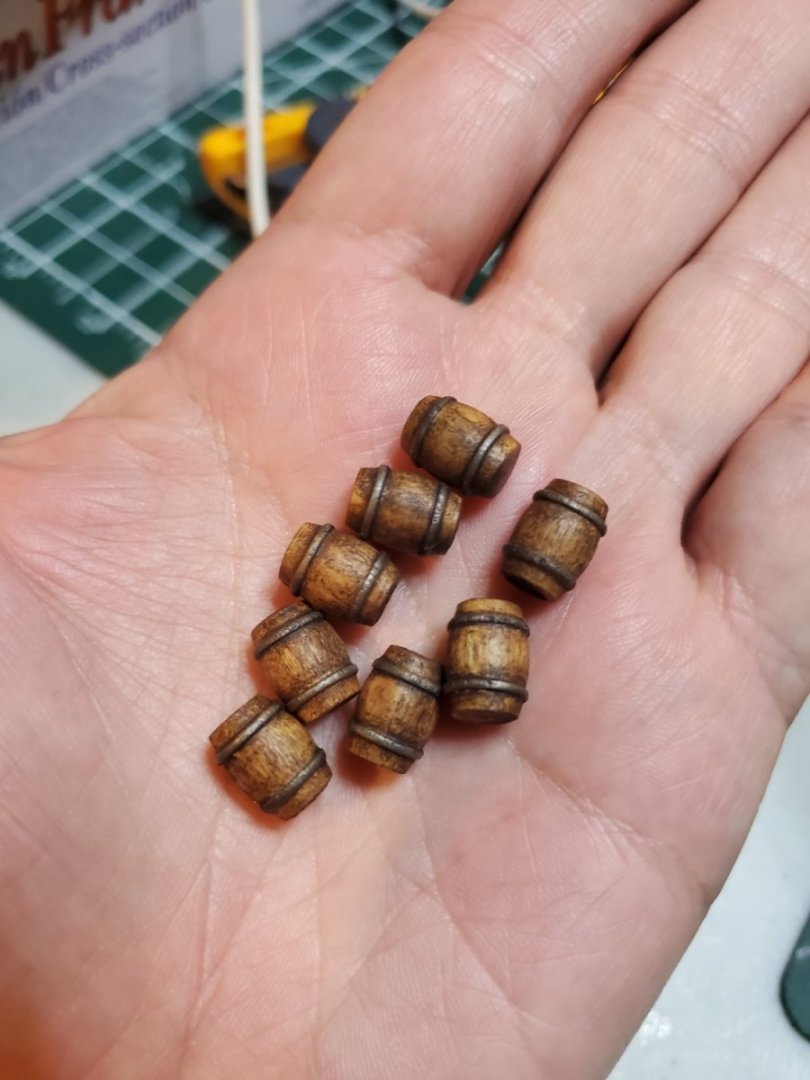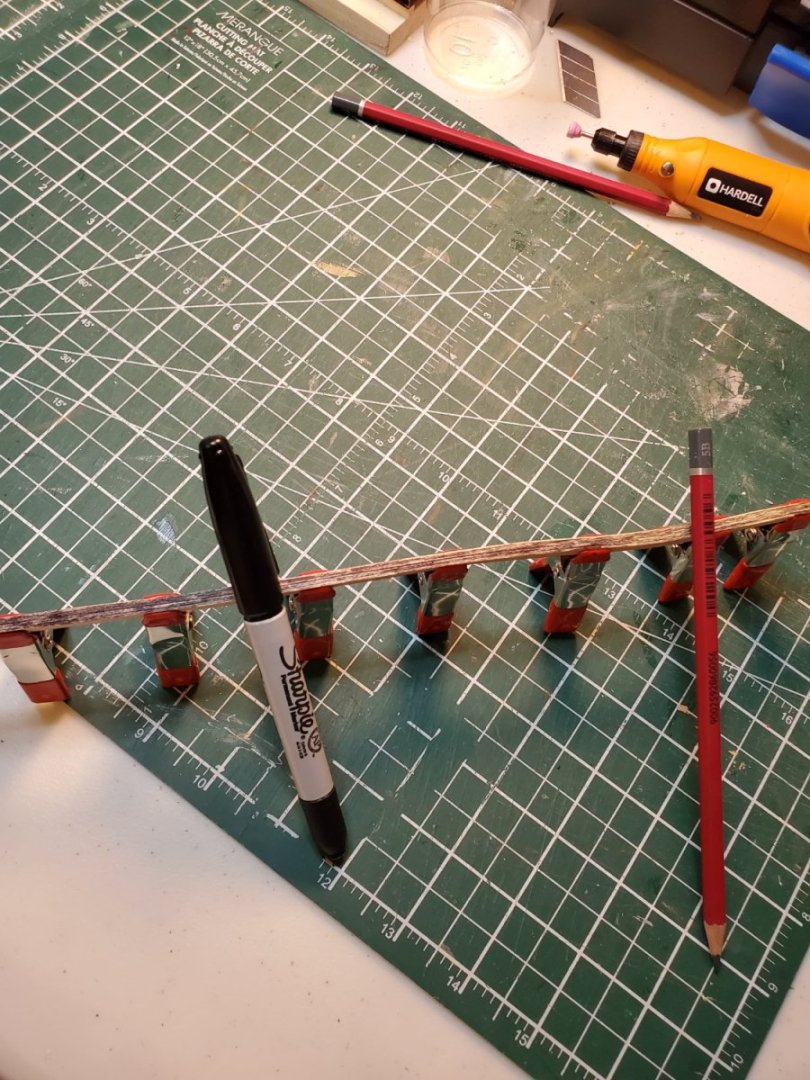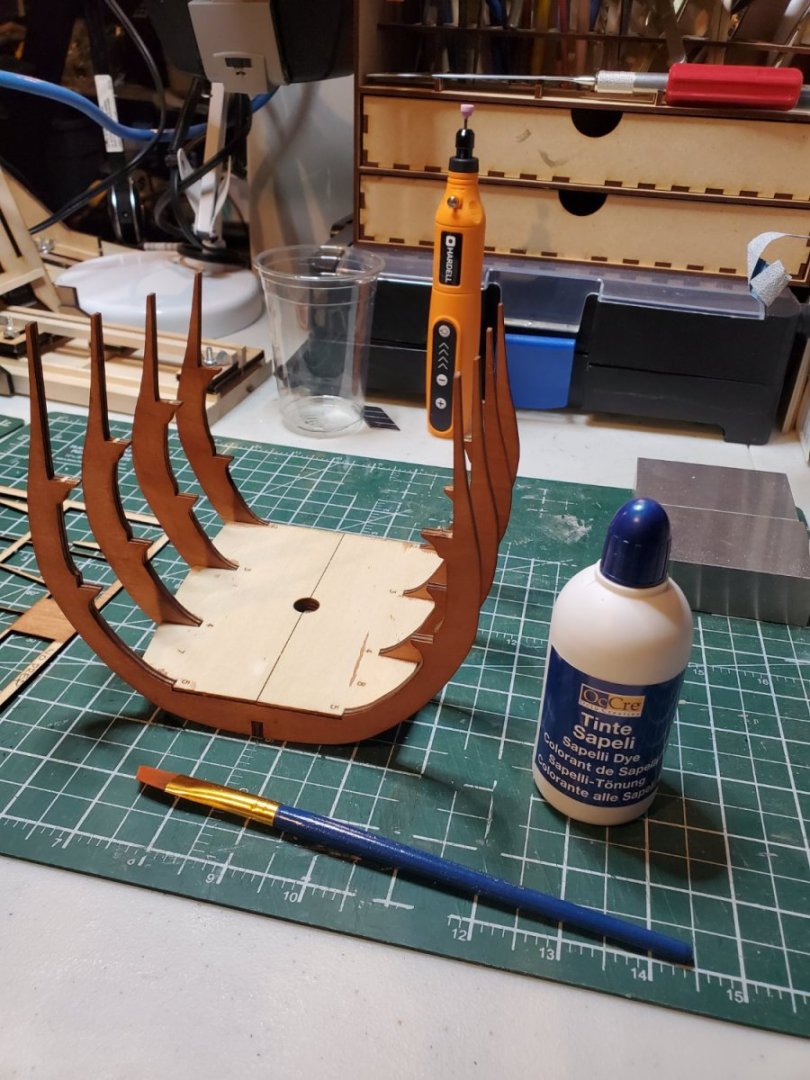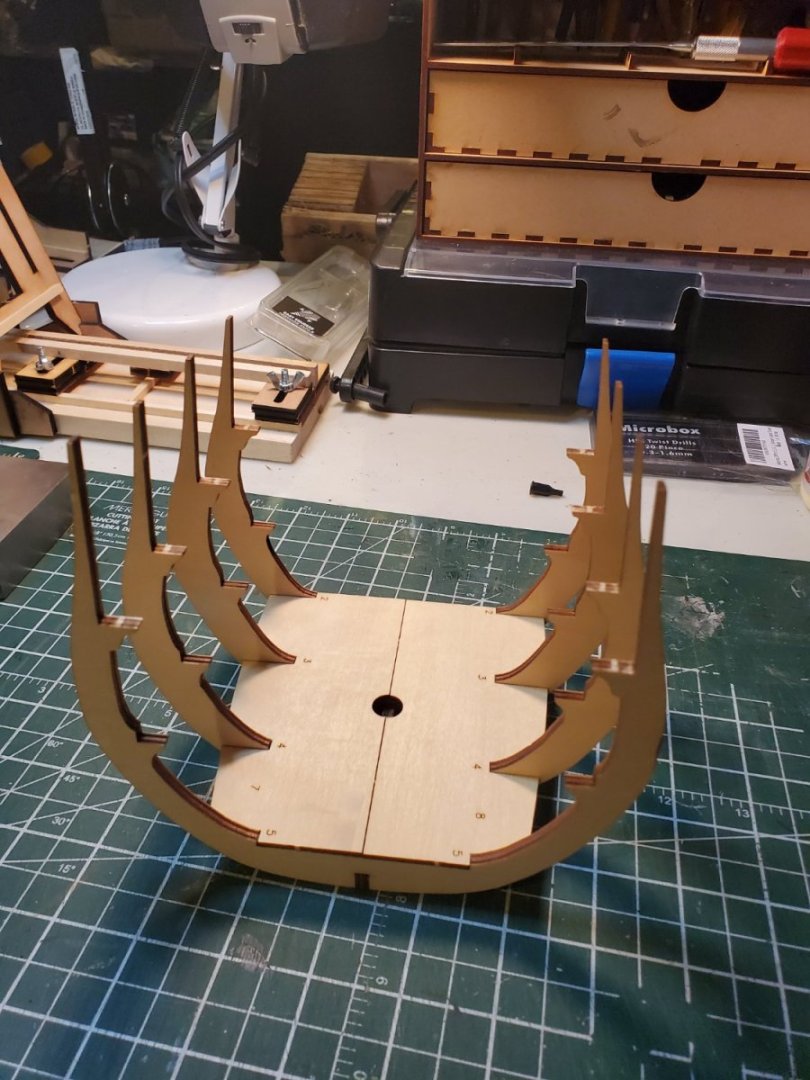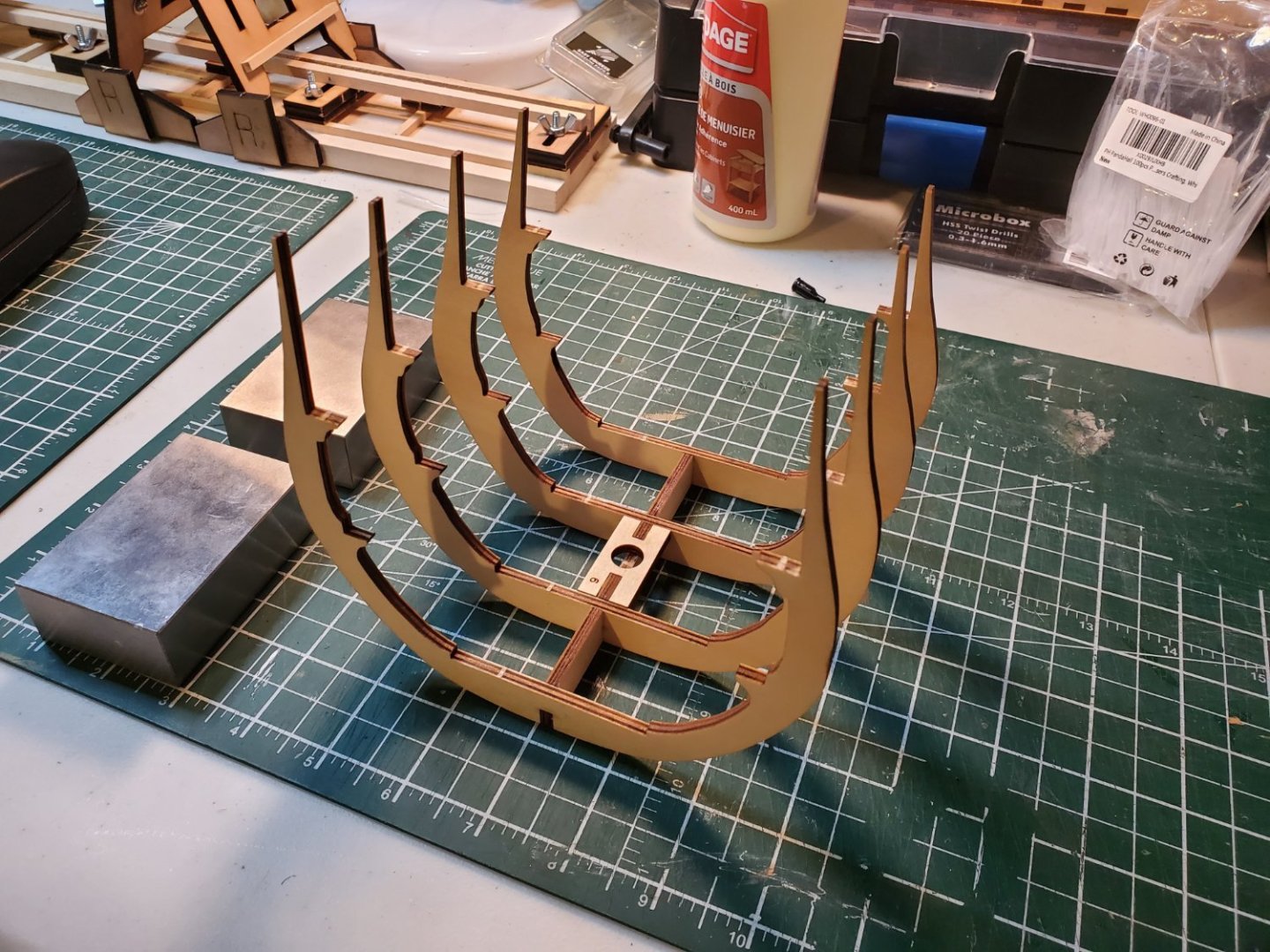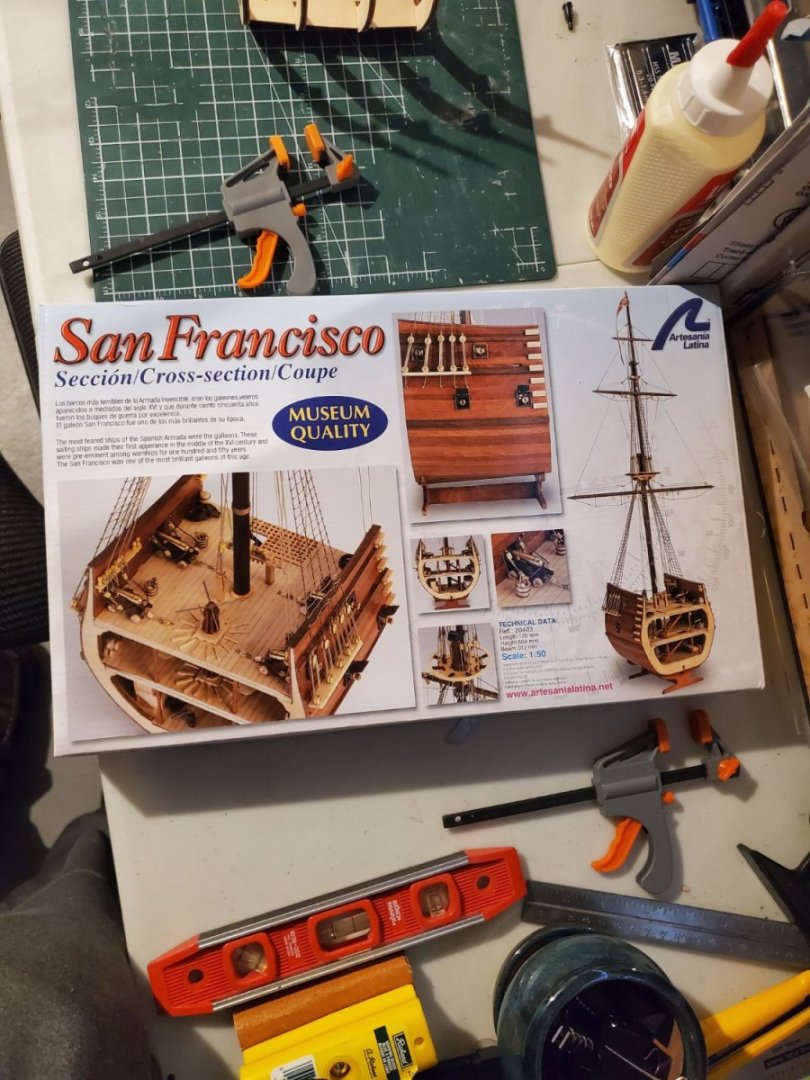-
Posts
11 -
Joined
-
Last visited
Recent Profile Visitors
The recent visitors block is disabled and is not being shown to other users.
-
Fast forward.. started on the hull. and started to build the interior. I haven't varnished the deck and I'm debating if I should or if even necessary.
- 8 replies
-
- San Francisco
- cross-section
-
(and 1 more)
Tagged with:
-
The deck is ready to go on.. and finished with water dye (oak). I decided to stick with water based stain/dye. I also tested the water and oil based (as in oil paint) stain on the barrels For the bigger barrels I decided to stay with the water base dye. And oil paint for the smaller barrels. The metal part was repainted black later on.
- 8 replies
-
- San Francisco
- cross-section
-
(and 1 more)
Tagged with:
-
testing the planks... Decided that a 5B pencil does the job just as good as the Sharpie. I'm thinking of using the size of 120mm and a pattern of "every 3 or 4". I figure that at that scale: 120mm X 50 = 6000mm so about 19 to 20 feet. Sounds about right for the real size of planks (probably longer). So the suggested size of 50mm seems too short. Plus, it'll be a good test to try a pattern that I never used.
- 8 replies
-
- San Francisco
- cross-section
-
(and 1 more)
Tagged with:
-
 JKC27 reacted to a post in a topic:
Hello from Ottawa Canada
JKC27 reacted to a post in a topic:
Hello from Ottawa Canada
-
 Haliburton reacted to a post in a topic:
Hello from Ottawa Canada
Haliburton reacted to a post in a topic:
Hello from Ottawa Canada
-
 mtaylor reacted to a post in a topic:
Hello from Ottawa Canada
mtaylor reacted to a post in a topic:
Hello from Ottawa Canada
-
 ccoyle reacted to a post in a topic:
Hello from Ottawa Canada
ccoyle reacted to a post in a topic:
Hello from Ottawa Canada
-
 ccoyle reacted to a post in a topic:
San Francisco Cross-section by Stéphane Hubert - Artesia Latina - 1:50
ccoyle reacted to a post in a topic:
San Francisco Cross-section by Stéphane Hubert - Artesia Latina - 1:50
-
 ccoyle reacted to a post in a topic:
San Francisco Cross-section by Stéphane Hubert - Artesia Latina - 1:50
ccoyle reacted to a post in a topic:
San Francisco Cross-section by Stéphane Hubert - Artesia Latina - 1:50
-
 BLACK VIKING reacted to a post in a topic:
San Francisco Cross-section by Stéphane Hubert - Artesia Latina - 1:50
BLACK VIKING reacted to a post in a topic:
San Francisco Cross-section by Stéphane Hubert - Artesia Latina - 1:50
-
 BLACK VIKING reacted to a post in a topic:
San Francisco Cross-section by Stéphane Hubert - Artesia Latina - 1:50
BLACK VIKING reacted to a post in a topic:
San Francisco Cross-section by Stéphane Hubert - Artesia Latina - 1:50
-
For the water based stain, I took the advice given by some folks here. I wetted the bulkheads and let it dry. Then I sanded them. I'm please with the result. I did some test on a separate piece of wood to see how much the grain would rise without this pre-treatment. Next will be the planking of the deck. So more research is needed about that...
- 8 replies
-
- San Francisco
- cross-section
-
(and 1 more)
Tagged with:
-
PS I hope the pictures are not too big... If they are, let me know and I'll shrink them 3dpaint. The deck (false deck?) was glues in place.. and started thinking about staining the "bulkheads" (yes I had to look it up). I purchase some Verathane stains. Did some test underneath the deck and... nope. The fumes filled up my whole basement. I live in a small PMQ (private military quarter) and it's not a good option. So I switch to water based stains.
- 8 replies
-
- San Francisco
- cross-section
-
(and 1 more)
Tagged with:
-
I decided to use two fairly heavy aluminium blocks to square the "ribs"? to the keel. One thing that annoyed me, in the instruction, is that they mostly use terms like glue part 1 with part 2 and not the actual name of the parts (keel, deck, etc..). So assemble "whatchamacallit 1" with "whoknowswhytheycallitthat 2". I'm having a strange feeling I may want to put some lighting between the decks and maybe some figurines. Just have to figure out the size.
- 8 replies
-
- San Francisco
- cross-section
-
(and 1 more)
Tagged with:
-
 Keith Black reacted to a post in a topic:
Hello from Ottawa Canada
Keith Black reacted to a post in a topic:
Hello from Ottawa Canada
-
Good day, So it starts. I purchased the San Francisco in a hobby store in Ottawa Canada. This is perfect for practicing and learning my new hobby. As well as won't have to contend with planking a full hull. I'm using carpenter glue in this case. It dries Yellow-ish so I'm not sure if this matters or I should just use the normal white PVA. I'm planning to use Legos for squaring. I used Legos years ago to square other wood projects I did..so why not.
- 8 replies
-
- San Francisco
- cross-section
-
(and 1 more)
Tagged with:
-
 JeffT reacted to a post in a topic:
Hello from Ottawa Canada
JeffT reacted to a post in a topic:
Hello from Ottawa Canada
-
Hi Folks, Greetings from Ottawa. I'm starting the hobby with the Artesia Latina San Fransciso Cross section model. I picked this model to test/practice many things. Like how to stains to how to implement lighting (leds), etc... Should be fun! Stephane Hubert
-
 Stephane Hubert reacted to a post in a topic:
Water Based Stain - suggestion
Stephane Hubert reacted to a post in a topic:
Water Based Stain - suggestion
-
Good Day, I'm looking for suggestion on water based stains. Which manufacturer for example. I believe that Occre is one that provided water based stains. I've always used oil before for wood. I have used Varythane oil stain this evening and now I remember why I hate the smell of that stuff. Stephane
-
 Stephane Hubert reacted to a post in a topic:
Size of rigging / ropes for San Francisco Cross section
Stephane Hubert reacted to a post in a topic:
Size of rigging / ropes for San Francisco Cross section
-
In case someone is interested. I discovered an article concerning the The Wreck of the Galleon San Francisco (1609). (https://www.academia.edu/88468542/The_Wreck_of_the_Galleon_San_Francisco_1609_Anatomy_of_a_Maritime_Disaster_in_the_Manila_Acapulco_Trade_Route) It suggested to use the data from the San Diego to approximate the statistics: "it is still more appropriate, based on chronological criteria, to use the actual length of San Diego’s keel combined with the late sixteenth-century ship designs, such those of the large Apostles. Interesting numbers here are: San Diego’s hull remains were studied by Michel L’Hour, who determined that the ship’s actual keel length measured 23.73 meters, which, according to him, equalled 42 codos (cubits). For San Diego he proposed a length of more than 65.5 codos (37 m) at the upper deck, a breadth of 20 codos (11.3 m). I'll be using this data in conjunction with the Spreadsheet that Allan Suggested. Cheers
-
Stephane Hubert changed their profile photo
-
Good Day, Complete newbie and already obsessing about the correct diameter for the ropes and rigging. I recently purchased the Artesania Latina "San Francisco" cross-section model. I've noticed that the tread is about 0.25mm diameter (except for one that is 0.15). I'm wondering if that is the correct diameter for the 1/50 model because I would like to substitute them with some better Cotton Ropes (or polyester) from Ropes of scale. Probably the first volley of another upcoming gazillion questions Any help would be greatly appreciated. cheers Stephane Hubert
About us
Modelshipworld - Advancing Ship Modeling through Research
SSL Secured
Your security is important for us so this Website is SSL-Secured
NRG Mailing Address
Nautical Research Guild
237 South Lincoln Street
Westmont IL, 60559-1917
Model Ship World ® and the MSW logo are Registered Trademarks, and belong to the Nautical Research Guild (United States Patent and Trademark Office: No. 6,929,264 & No. 6,929,274, registered Dec. 20, 2022)
Helpful Links
About the NRG
If you enjoy building ship models that are historically accurate as well as beautiful, then The Nautical Research Guild (NRG) is just right for you.
The Guild is a non-profit educational organization whose mission is to “Advance Ship Modeling Through Research”. We provide support to our members in their efforts to raise the quality of their model ships.
The Nautical Research Guild has published our world-renowned quarterly magazine, The Nautical Research Journal, since 1955. The pages of the Journal are full of articles by accomplished ship modelers who show you how they create those exquisite details on their models, and by maritime historians who show you the correct details to build. The Journal is available in both print and digital editions. Go to the NRG web site (www.thenrg.org) to download a complimentary digital copy of the Journal. The NRG also publishes plan sets, books and compilations of back issues of the Journal and the former Ships in Scale and Model Ship Builder magazines.



